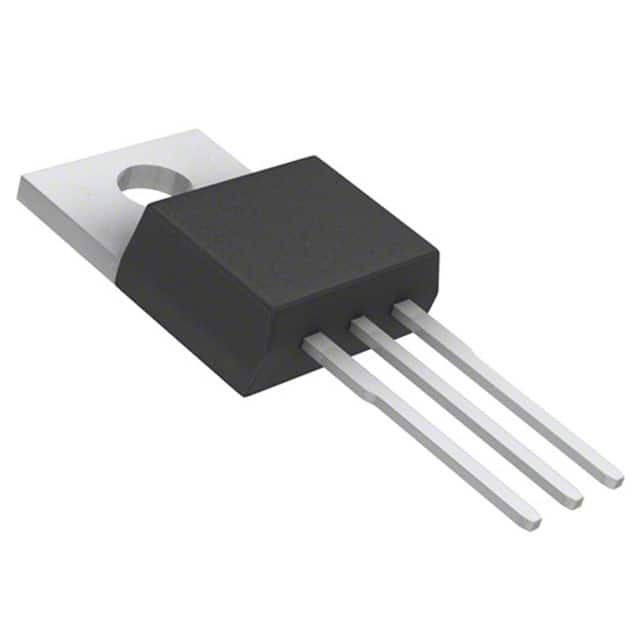FQP5N80: Product Overview and Detailed Information
Introduction
The FQP5N80 is a power MOSFET belonging to the category of electronic components. It is widely used in various applications due to its unique characteristics and functional features. This entry provides an in-depth overview of the FQP5N80, including its basic information, specifications, pin configuration, functional features, advantages and disadvantages, working principles, application field plans, and alternative models.
Basic Information Overview
- Category: Electronic Components
- Use: Power MOSFET
- Characteristics: High power handling capacity, low on-state resistance, fast switching speed
- Package: TO-220
- Essence: Power management
- Packaging/Quantity: Typically available in reels or tubes containing multiple units
Specifications
- Voltage Rating: 800V
- Current Rating: 5A
- On-State Resistance (RDS(on)): 1.6Ω
- Gate Threshold Voltage: 2-4V
- Operating Temperature Range: -55°C to 150°C
- Mounting Type: Through Hole
- Package / Case: TO-220-3
Detailed Pin Configuration
The FQP5N80 features a standard TO-220 package with three pins: 1. Gate (G): Input for controlling the switching operation 2. Drain (D): Output terminal connected to the load 3. Source (S): Common terminal connected to the ground
Functional Features
- High Power Handling: Capable of handling high power levels, suitable for power applications.
- Low On-State Resistance: Minimizes power loss and heat generation during operation.
- Fast Switching Speed: Enables rapid switching between on and off states, contributing to efficient performance.
Advantages and Disadvantages
Advantages
- High power handling capacity
- Low on-state resistance
- Fast switching speed
- Reliable performance in power management applications
Disadvantages
- Higher gate threshold voltage compared to some alternative models
- Limited availability of compatible heatsinks for TO-220 package
Working Principles
The FQP5N80 operates based on the principles of metal-oxide-semiconductor field-effect transistors (MOSFETs). When a sufficient voltage is applied to the gate terminal, it creates an electric field that controls the flow of current between the drain and source terminals. This enables the MOSFET to act as a switch, regulating the power flow in the circuit.
Detailed Application Field Plans
The FQP5N80 finds extensive use in various applications, including but not limited to: - Switching power supplies - Motor control circuits - Inverters and converters - Audio amplifiers - LED lighting systems
Detailed and Complete Alternative Models
Some alternative models to the FQP5N80 include: - IRF840: Similar voltage and current ratings, lower gate threshold voltage - STP5NK80ZFP: Comparable specifications, enhanced thermal performance - FQPF5N60C: Lower voltage rating, suitable for lower power applications
In conclusion, the FQP5N80 power MOSFET offers high power handling capacity, low on-state resistance, and fast switching speed, making it a versatile component for power management applications across various industries.
Word Count: 453
قم بإدراج 10 أسئلة وإجابات شائعة تتعلق بتطبيق FQP5N80 في الحلول التقنية
What is FQP5N80?
- FQP5N80 is a power MOSFET transistor designed for high-speed switching applications.
What are the key features of FQP5N80?
- FQP5N80 features include a low on-resistance, fast switching speed, and high voltage capability, making it suitable for various power management applications.
What is the maximum voltage rating of FQP5N80?
- The maximum voltage rating of FQP5N80 is typically 800 volts, allowing it to be used in high-voltage applications.
What are the typical applications of FQP5N80?
- FQP5N80 is commonly used in power supplies, motor control, lighting systems, and other high-power switching applications.
What is the on-resistance of FQP5N80?
- The on-resistance of FQP5N80 is typically low, which helps minimize power losses and improve efficiency in switching circuits.
Can FQP5N80 be used in high-frequency applications?
- Yes, FQP5N80's fast switching speed makes it suitable for high-frequency applications such as switch-mode power supplies and inverters.
What are the thermal characteristics of FQP5N80?
- FQP5N80 has good thermal performance, allowing it to dissipate heat effectively in high-power applications.
Is FQP5N80 suitable for automotive applications?
- Yes, FQP5N80 can be used in automotive systems such as electronic ignition, motor control, and battery management due to its high voltage capability.
What are the recommended operating conditions for FQP5N80?
- FQP5N80 operates within a specified temperature range and voltage limits, which should be carefully considered in the design of technical solutions.
Where can I find detailed specifications and application notes for FQP5N80?
- Detailed specifications and application notes for FQP5N80 can be found in the manufacturer's datasheet and application guides, providing comprehensive information for designing technical solutions.


